| Listing 1 - 10 of 13 | << page >> |
Sort by
|
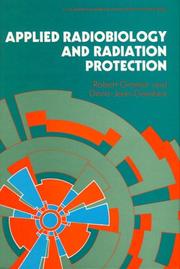
ISBN: 0130399914 Year: 1990 Publisher: New York Toronto Singapore Ellis Horwood
Abstract | Keywords | Export | Availability | Bookmark
 Loading...
Loading...Choose an application
- Reference Manager
- EndNote
- RefWorks (Direct export to RefWorks)
Radiobiology --- Ionizing radiation - Safety measures. --- Radiobiology. --- Radiation Effects. --- Radiation, Ionizing. --- Radiation Protection.
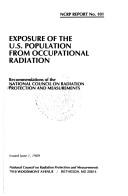
ISBN: 0929600053 Year: 1989 Publisher: Bethesda, MD The Council
Abstract | Keywords | Export | Availability | Bookmark
 Loading...
Loading...Choose an application
- Reference Manager
- EndNote
- RefWorks (Direct export to RefWorks)
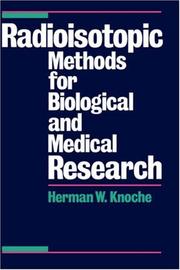
ISBN: 0195058062 9780195058062 Year: 1991 Publisher: New York (N.Y.): Oxford university press,
Abstract | Keywords | Export | Availability | Bookmark
 Loading...
Loading...Choose an application
- Reference Manager
- EndNote
- RefWorks (Direct export to RefWorks)
Atomic medicine --- Bestraling--Dosering --- Dosimetry --- Médecine nucléaire --- Nucleaire geneeskunde --- Nuclear medicine --- Radiation dosimetry --- Radiation monitoring --- Radiation--Dosage--Measurement --- Radiations--Dosage --- Radioactieve indicatoren in de biologie --- Radioactive tracers in biology --- Radioisotopes in medicine --- Traceurs radioactifs en biologie --- Radiation --- Safety measures --- Measurement --- Nuclear medicine. --- Radioactive tracers in biology. --- Radiation - Safety measures. --- Radiation dosimetry. --- Radiometry. --- Radiation - Safety measures
Book
ISBN: 9782872098941 2872098941 Year: 2008 Volume: 3 Publisher: Louvain-la-Neuve: Academia-Bruylant,
Abstract | Keywords | Export | Availability | Bookmark
 Loading...
Loading...Choose an application
- Reference Manager
- EndNote
- RefWorks (Direct export to RefWorks)
The International Commission on Radiological Protection (ICRP) is recommending measures to guarantee the health of the public exposed to ionising radiation. During the last years, ICRP proposed fundamental changes in its protection approach. What is at stake in this evolution ? What is the ethical dimension of radiological protection and how can we frame the process options of ICRP within ethical theories ? The ICRP evolution is here analysed from different standpoints. The three successive approaches of radiological protection - justification, optimisation and limits - are focused on ethical aspects by physicists, biologists, engineers, medical physicians, philosophers, ethicists, psychologists and economists. These approaches also take place in the context of precaution and intergenerational responsibility. Recent tendencies in ICRP were paying less attention to justification and optimisation while decreasing the status of limits. The authors express convergences in their concern for a degradation of this unique system of protection based on the precautionary ALARA principle. The hierarchy and complementarities of the triple system of radiological protection are pointed out to be crucial both from ethical and political points of view.
Radiation --- Safety measures --- Moral and ethical aspects. --- Bestraling --- Medische ethiek --- Radiologie --- Radiation dosimetry --- Moral and ethical aspects --- Standards --- Congresses --- Ethics --- Monograph --- Physics --- Radiology --- Safety measures&delete& --- Radiation - Safety measures - Moral and ethical aspects.
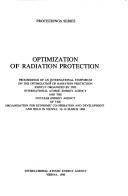
ISBN: 9200203868 9789200203862 Year: 1986 Volume: vol *102 Publisher: Vienna: International atomic energy agency,
Abstract | Keywords | Export | Availability | Bookmark
 Loading...
Loading...Choose an application
- Reference Manager
- EndNote
- RefWorks (Direct export to RefWorks)
Radiation --- Safety measures --- Congresses --- 621.039.58 <063> --- -Physics --- Radiology --- Safety considerations. Siting, containment, fault analysis etc.--Congressen --- -Congresses --- -Safety considerations. Siting, containment, fault analysis etc.--Congressen --- 621.039.58 <063> Safety considerations. Siting, containment, fault analysis etc.--Congressen --- -621.039.58 <063> Safety considerations. Siting, containment, fault analysis etc.--Congressen --- Physics --- Safety measures&delete& --- Report --- Radiation - Safety measures - Congresses
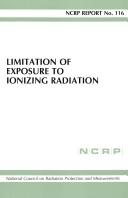
ISBN: 0929600304 Year: 1993 Volume: 116 Publisher: Bethesda, MD The Council
Abstract | Keywords | Export | Availability | Bookmark
 Loading...
Loading...Choose an application
- Reference Manager
- EndNote
- RefWorks (Direct export to RefWorks)
Bestraling--Dosering --- Dosimetry --- Radiation dosimetry --- Radiation monitoring --- Radiation--Dosage--Measurement --- Radiations--Dosage --- Occupational Exposure --- Radiation Protection --- Radiation, Ionizing. --- Ionizing Radiation --- Ionizing Radiations --- Radiations, Ionizing --- prevention & control. --- standards. --- Ionizing radiation --- Radiation, Ionizing --- Safety measures --- prevention & control --- standards --- Ionizing radiation - Dosage - United States. --- Radiation workers - Diseases - United States. --- Radiation - Safety measures - United States.
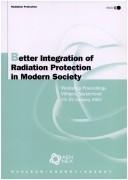
ISBN: 1280034513 9786610034512 9264196137 9789264196131 9264196943 Year: 2002 Publisher: Paris Organization for Economic Cooperation and Development. Nuclear Energy Agency
Abstract | Keywords | Export | Availability | Bookmark
 Loading...
Loading...Choose an application
- Reference Manager
- EndNote
- RefWorks (Direct export to RefWorks)
The societal aspects of risk governance are increasingly becoming a part of public decision-making processes. This tendency is particularly evident in matters dealing with the protection of human health and the environment. The NEA Committee on Radiation Protection and Public Health organised a workshop to examine stakeholder involvement processes through which governments and regulators can arrive at accepted decisions regarding radiological protection. An example of an area in which stakeholder involvement is important is the clean-up of sites contaminated by accidents or by past industrial or research activities. These proceedings address the roles of various stakeholders in the decision-making process, and their expectations regarding how a modern system of radiological protection should be integrated within the broader context of risk governance. Case studies are presented to illustrate good practice and as a basis for drawing conclusions regarding general lessons that can be applicable in many different national contexts. These proceedings will be of interest to policy makers, radiation protection experts and interested members of the public.
Nuclear industry -- Decision making -- Congresses. --- Nuclear industry. --- Radiation -- Safety measures -- Congresses. --- Radiation --- Nuclear industry --- Public Health --- Environmental Health --- Health & Biological Sciences --- Safety measures --- Decision making --- Atomic energy industries --- Atomic industry --- Atomic power industry --- Nuclear energy industry --- Nuclear power industry --- Energy industries --- Nuclear energy --- Switzerland --- Rayonnement --- Industrie nucléaire --- Congresses --- Sécurité --- Mesures --- Congrès --- Prise de décision
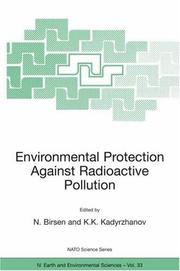
ISBN: 1402017898 1402017901 9400709757 Year: 2003 Volume: vol. 33 Publisher: Dordrecht ; Boston ; London Brussels Kluwer Academic Publishers NATO Scientific Affairs Division
Abstract | Keywords | Export | Availability | Bookmark
 Loading...
Loading...Choose an application
- Reference Manager
- EndNote
- RefWorks (Direct export to RefWorks)
NATO Advanced Research Workshop "Environmental Protection Against Radioactive Pollution" was held in Almaty on September 16-19, 2002. Experts from Azerbaijan, Denmark, Hungary, Kazakhstan, Kyrgyzstan, Norway, Russia, Tajikistan, Turkey, Ukraine, USA, Uzbekistan and the IAEA have participated and made presentations. The Workshop was organized parallel to the “2nd Eurasia Conference on Nuclear Science and its Application” held in Almaty on September 16-19, 2002 that was organized by Institute of Nuclear Physics of Kazakhstan with Turkish Atomic Energy Authority and National Academy of Science of Azerbaijan, National Academy of Science of Kyrgyzstan, Institute of Nuclear Physics of Uzbekistan. So, the number of participants for the Workshop was rather high. The NATO Advanced Research Workshop generated important interactions and provided a mechanism for scientists of different nations and of varied disciplines to discuss challenges that confront many countries around the world. The reports presented at the Workshop were published in this NATO Science Series. The main directions of the presented reports were as follows; General estimation of the radioactive contamination of the territories and radiation hazardous objects, including former military test sites, areas influenced due to Chernobly and Mayak accidents, and territories of oil fields; Techniques and procedures of radioecological monitoring; Techniques of determination of radionuclide concentrations and its species in the environment.
Radioactive pollution --- Pollution radioactive --- Congresses. --- Congrès --- Congrès --- Radiation protection. --- Radiation—Safety measures. --- Nature conservation. --- Environment. --- Effects of Radiation/Radiation Protection. --- Nature Conservation. --- Environment, general. --- Conservation of nature --- Nature --- Nature protection --- Protection of nature --- Conservation of natural resources --- Applied ecology --- Conservation biology --- Endangered ecosystems --- Natural areas --- Radiation monitoring --- Radiation protection --- Conservation
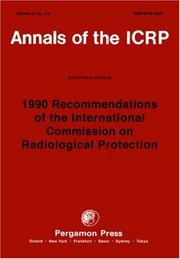
ISSN: 01466453 ISBN: 0080411444 9780080411446 Volume: 60 Publisher: Oxford : Pergamon press,
Abstract | Keywords | Export | Availability | Bookmark
 Loading...
Loading...Choose an application
- Reference Manager
- EndNote
- RefWorks (Direct export to RefWorks)
Nuclear physics --- Radiotherapy. Isotope therapy --- Nuclear chemistry --- Elementary particles --- stralingshygiëne --- Hygiene. Public health. Protection --- Radiation --- Radiography. --- Safety measures. --- 613.648 --- 614.73 --- Report --- E-books --- Journal --- Periodicals --- Nuclear energy --- Environmental protection. Environmental technology --- farmacologie --- kernenergie --- Engineering. --- Nuclear Engineering --- Nuclear Physics --- Pollution (Air, Noise, Soil and Water) & Control --- Radiation. --- Radioactivity & nuclear fallout --- Waste management and Recycling --- Environmental Sciences. --- Physics. --- Engineering --- Environmental Sciences --- Health Sciences --- Physics --- Public health --- Radiations. Mesures de sécurité. (Collection) --- Radiatie. Veiligheidsmaatregelen. (Reeks) --- Radiation - Safety measures.
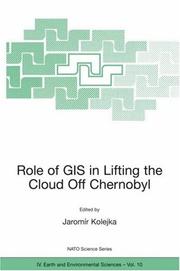
ISBN: 140200768X 1402007698 9401005184 Year: 2002 Volume: v. 10. Publisher: Dordrecht ; Boston ; London Brussels Kluwer Academic Publishers NATO Scientific Affairs Division
Abstract | Keywords | Export | Availability | Bookmark
 Loading...
Loading...Choose an application
- Reference Manager
- EndNote
- RefWorks (Direct export to RefWorks)
The 15th anniversary of the Chernobyl nuclear power plant disaster offered a timely opportunity for an expert assessment of the current situation and suggestions for approaches to managing the information associated with the site and surrounding contaminated territories. The great quantity of data coming from the contaminated region was and is very difficult to use without he aid of modern information technologies, especially Geographic Information Systems (GIS) and Remote Sensing (RS). Application of these technologies, and related expertise, became crucial to the region's economic recovery and sustainability planning. Given the real possibility of a similar accident at nuclear facilities elsewhere around the world, the development of recovery strategies based on experience gained at Chernobyl, using modern scientific methods and technologies, will be invaluable in the future. The presentations and discussion reported in the book have led to some key conclusions. Image maps derived from satellite imagery are the most economical, up to date and readily available basis for Chernobyl-related applications, as well as for other future applications. The study of soil-plant transfer of radionuclides afforded comparatively much more reliable data. GIS in association with adequate knowledge is a valuable tool in decision making and modelling of contaminated areas and objects.
Radioactive pollution --- Radioactive waste sites --- Geographic information systems --- Remote sensing --- Chernobyl Nuclear Accident, Chornobyl', Ukraine, 1986 --- Dépôts de déchets radioactifs --- Cleanup --- Environmental aspects --- Nettoyage --- Chernobyl Nuclear Accident, Chornobylʹ, Ukraine, 1986 --- Dépôts de déchets radioactifs --- Monograph --- Geographical information systems. --- Radiation protection. --- Radiation—Safety measures. --- Remote sensing. --- Data structures (Computer science). --- Waste management. --- Geographical Information Systems/Cartography. --- Effects of Radiation/Radiation Protection. --- Remote Sensing/Photogrammetry. --- Data Structures and Information Theory. --- Waste Management/Waste Technology. --- Information structures (Computer science) --- Structures, Data (Computer science) --- Structures, Information (Computer science) --- Electronic data processing --- File organization (Computer science) --- Abstract data types (Computer science) --- Remote-sensing imagery --- Remote sensing systems --- Remote terrain sensing --- Sensing, Remote --- Terrain sensing, Remote --- Aerial photogrammetry --- Aerospace telemetry --- Detectors --- Space optics --- Radiation monitoring --- Radiation protection --- Geographical information systems --- GIS (Information systems) --- Information storage and retrieval systems --- Geography
| Listing 1 - 10 of 13 | << page >> |
Sort by
|

 Search
Search Feedback
Feedback About UniCat
About UniCat  Help
Help News
News